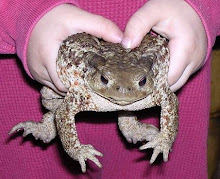
Well, I'm back at work on another "textile" project prompted by a lovely, large Persian weaving I saw in a gallery last year. As I alluded to in my previous post, I am working off a long thin board to print a 4" X 24" image. This is an experiment as the idea is to use these long narrow strips to constitute a larger print by attaching them side by side to make a larger piece. The idea for this comes from a common practice among tribal weavers throughout much of Persia and the East where the frequent migrations required small, narrow, easily portable looms. Working on the ground, horizontally, the width of the piece generated was often only the width of warp strands that could be picked up by the weaver with one hand as she moved the shuttle across and was often measured in finger breadths. The length of the warps was not limited however so long strips would be woven, then cut into lengths and sewn together to make covers, room dividers, carpets, horse blankets etc.
The different tribes and regions led to very different looks; some are monochrome, some have multicolored stripes decorated by alternating the color of the warps to add talismanic symbols and decorations.


I chose a deliberately sober palate of alternating black and white stripes accented by thin red banding--this is very similar to a stunning antique piece I found here: http://www.warpandweft.com/antique-rugs/flatweaves/265/?page=1
What I like so much about these is as they were woven in long strips, during the course of weaving the subtle differences in how tightly packed were the wefts--the horizontal strands--that the actual width varies slightly and rather randomly. When sewn side-by-side this irregularity leads to a wonderful, chaotic rhythm of the alternating bands that I find both beautiful and evocative.
I am not the only one. Here's a painting, "Cite'", by Elsworth Kelly from 1951 and painted on multiple blocks of wood--probably not influenced by Kurdish flatweaves but still the focus and interest and jazzy rhythm of the results are similar.

Like most of my experiments the results have been mixed. These were quickly printed on machine-made paper to try out the idea--I've subsequently printed more onto good paper but I've noticed from the trials that the nature of printing off one block--a template-- means that wonderful variability gets lost as each of my images/portions is the same. I've alleviated it a bit by inverting the central image but I can see the difference.
I still need to try and get some more texture and richness to the white/pale yellow stripes and when I print my background colors I'll try too to get some more depth and shadow to add visual interest and complexity/depth. I'm also planning on trying to go to 5 or seven strips to see how it works as they get bigger.

Whoa! Eye popping.
ReplyDeleteLIke it and an interesting way to play with color and design......
ReplyDeleteYeah, but just looking at the Ellsworth Kelly work makes me despondent. I still like it so much more than how mine is shaping up.
ReplyDeletePartly I'm having trouble getting a really dark, rich, black. My black stripes have 3-4 impressions and maybe my wood wasn't smooth enough but there is still too much white paper showing.
Hi Andrew. I like the black not being solid...I think it adds more texture, or something like that. It breathes. But the reason I learned to like the effect is that I always have had the same issue. Nice design!
ReplyDelete